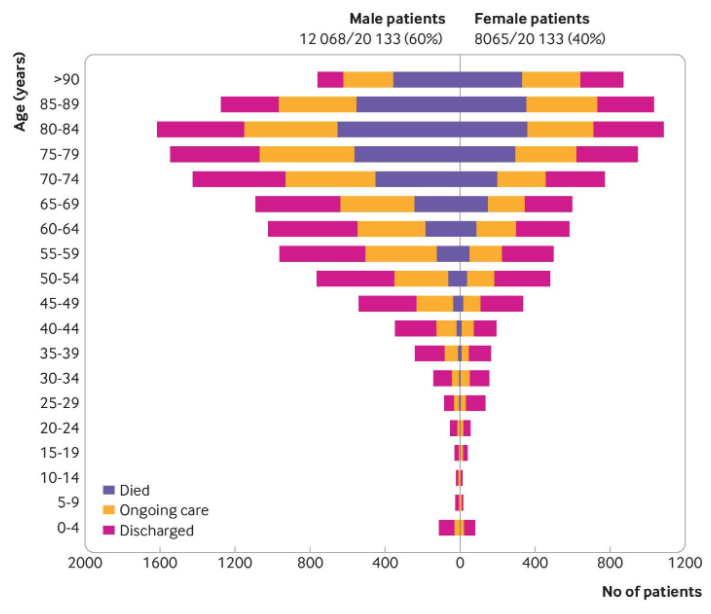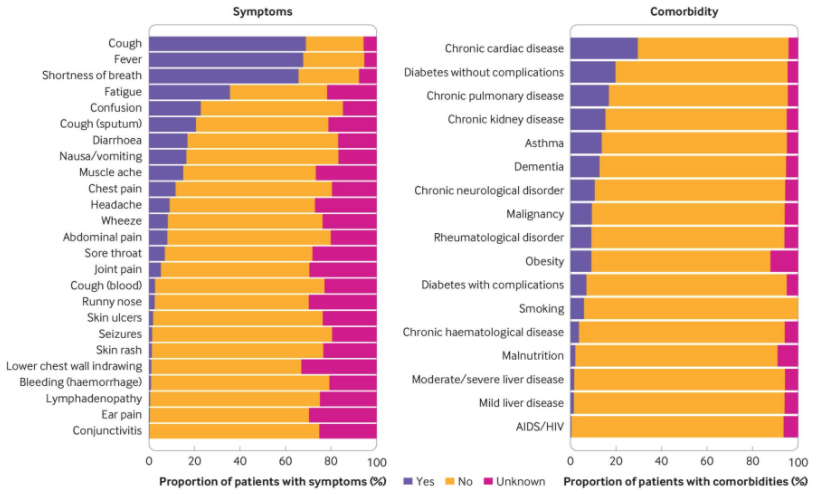- A new study from The BMJ highlights the most common coronavirus symptoms, with a cough and a fever being the top two.
- The study also found that there are four main risk factors that make coronavirus victims more likely to experience severe and life-threatening symptoms.
A new research study from The BMJ — formerly known as The British Medical Journal — relays that there are four main risk factors that tend to predict when a coronavirus victim is liable to suffer severe symptoms. Indeed, one of the more peculiar aspects of the coronavirus is that some victims are entirely asymptomatic, while others quickly find most every major organ in their body under attack.
According to the study, the four factors that put coronavirus victims at a greater risk of experiencing severe symptoms include age, sex, weight, and any underlying illness. Hardly a surprise, we’ve seen a lot of anecdotal evidence over the last two months which strongly suggests that men over the age of 70 are particularly vulnerable to the virus. We’ve also seen reports suggest that patients suffering from obesity or other underlying health conditions such as diabetes are uniquely vulnerable.
The study involved more than 20,000 patients in the UK across 208 hospitals and may be one of the largest of its kind thus far. Some of the data, of course, speaks for itself. Over the course of two and a half months, the study found that the median age of patients admitted to the hospital with coronavirus symptoms was 73. Further, the study found that 60% of coronavirus patients were men.
Tellingly, the vast majority of patients who endured severe coronavirus symptoms had serious underlying health complications, with heart disease being the most common. Other underlying health issues that were found to be common included diabetes and chronic kidney disease.
All told, the report notes that “increasing age, male sex, and comorbidities including chronic cardiac disease, non-asthmatic chronic pulmonary disease, chronic kidney disease, liver disease and obesity were associated with higher mortality in hospital.”
The chart below helps illustrate the higher mortality rate for older men who come down with the coronavirus:

Another interesting chart helps illustrate the most common coronavirus symptoms experienced by patients who went to the hospital. As evidenced below, the five most common symptoms include cough, fever, shortness of breath, fatigue, and confusion.

On a somewhat related note, a separate study from the Imperial College in London found that smokers are more than 14% likely to end up in a hospital with coronavirus symptoms than non-smokers. Specifically, the study found that smoking tends to increase the number of ACE2 receptors in the respiratory tract, which ultimately makes it easier for the coronavirus to gain a foothold in the body.
Lastly, it’s worth mentioning that another coronavirus study recently found that most coronavirus patients are no longer infectious 11 days after they first begin to exhibit symptoms.







